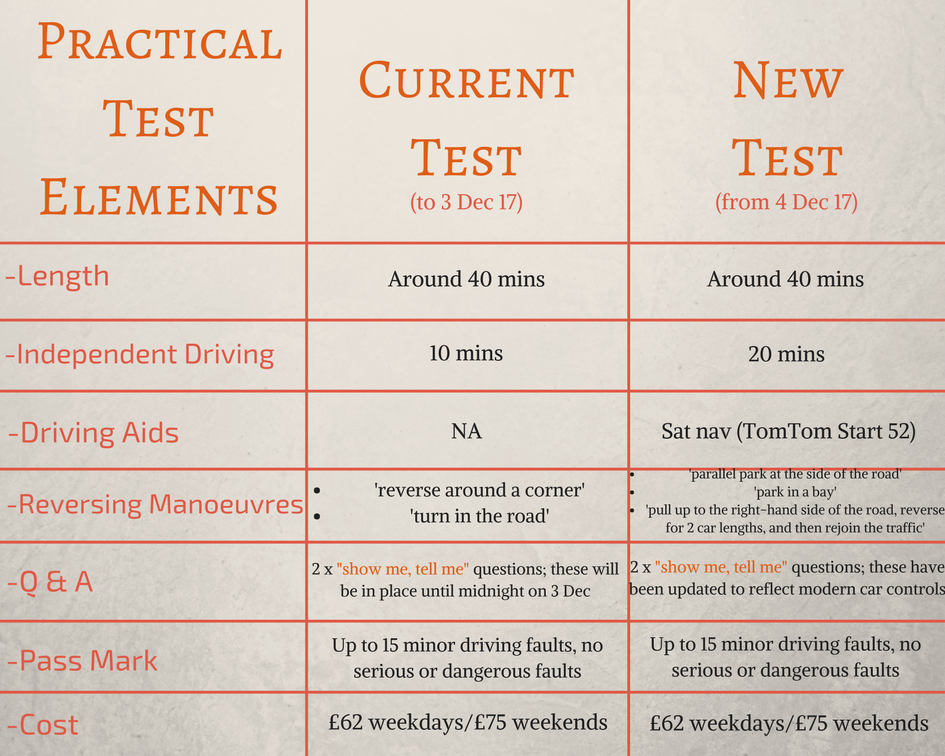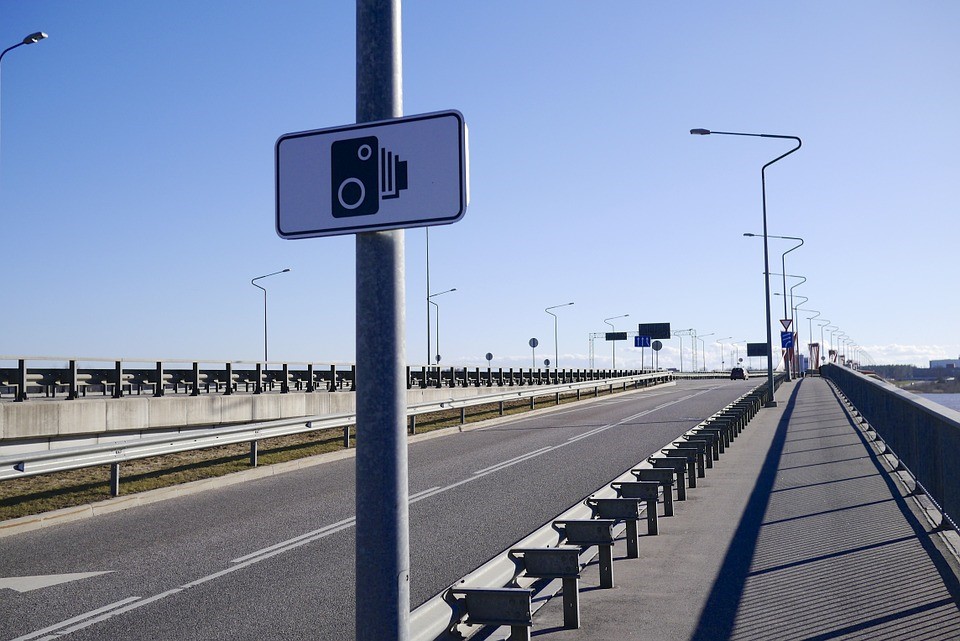It’s only 2 months until the practical part of the driving test for the UK (excl. NI) as we know it undergoes one of the most radical changes it has seen in the past 20 years, bringing it up to speed with technology commonly used by drivers such as sat navs and in-car safety systems. December 4th is the date, but are you ready to face the all-new driving test?
What’s Changing?

*1 in 5 drivers taking the test will be asked to follow traffic signs instead of a sat nav.
**There is a separate cost for disqualified drivers who are retaking an extended driving test of £124 weekdays / £150 weekends.
The major changes surround the core competence of the driver in question as to their knowledge and ability to drive independently with a modern driving aid, as well as perhaps slightly more complicated reversing manoeuvres. The independent driving section of the test now makes up half of it, with the other half comprising of Q&A with the instructor both at the start and during the test, manoeuvres, and displaying competent driving throughout.
Tests will also take place on more high-speed route (excl. motorways) to ensure learner drivers are better versed in safe driving on this type of road.
Why is the practical test changing?
With nearly a quarter of deaths of 15-19-year olds being attributed to road collisions, the DVSA decided to review the current driving test and qualifications for a pass mark to improve safety on the roads and the competence of those passing the test.
Whilst independent driving has been a part of the test since 2010, increasing this time with the addition of a sat nav means that drivers can relate to this more, as they will be doing this once they’re on the road on their own.
Introducing sat navs
In addition, with 52% of drivers now using a sat nav daily, the test needs to reflect that, especially as the DVSA need to ensure drivers are competent with using them. A TomTom Start 52 is the standard sat nav being used for the test; drivers will not be able to bring and use their own models or built in car sat navs, although instructors can use a different model during lessons.
As it stands, instructors and examiners are restricted to teaching learners to drive independently on roads where there are suitable signs, so learners can understand how to read and follow them correctly and safely. Using a sat nav will widen this to more challenging routes where there are fewer signs, such as rural roads. That said, learners do still need to know how to read traffic signs, as 1 in 5 tests will not use a sat nav.
Another aspect about introducing a sat nav to the test was further provision for deaf drivers. A visual driving aid goes a long way to helping those with hearing problems drive independently, and a sat nav will meet this need.
For further information on how the practical test for cars works in Northern Ireland, please click here.









